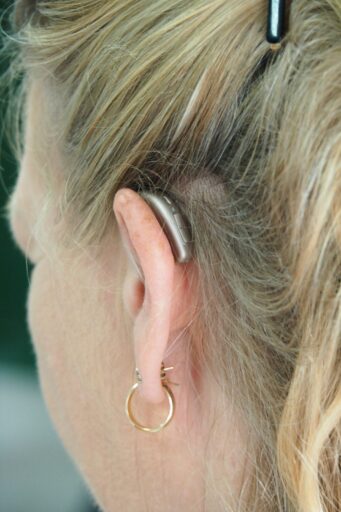Caring for hearing aids involves more than just turning them on and off. Ensuring they perform effectively and last longer is about the right accessories, and one of the most crucial is the Phonak wax guard. These small yet mighty components play a significant role in maintaining the clarity and quality of sound, as well as extending the life of the hearing aid. This blog will explore the importance of these filters and provide practical guidance on their use and care.
Understanding the role of phonak wax guards
Phonak wax guards are essential components designed to keep hearing aids free from earwax and debris. The ear naturally produces wax, which can enter the hearing aid and interfere with its performance. Over time, this can lead to reduced sound quality and, potentially, damage.
Incorporating high-quality materials, these phonak filters act as a protective barrier. They prevent earwax and dirt from clogging the delicate components inside the hearing aid. This protection ensures that users can enjoy clear, consistent sound without frequent disruptions or the need for repairs.
Maintaining these guards is simple yet impactful. Regular checks and replacements help uphold the integrity of the hearing aid, ensuring it functions optimally. With proper care, users can experience a seamless auditory experience, free from the common issues associated with unprotected devices.
Why regular replacement is crucial
Replacing phonak filters regularly is vital for maintaining hearing aid performance. A clogged filter can significantly affect sound quality, leading to muffled or distorted audio. Regular replacement keeps the device working as intended, providing clear and crisp sound.
Neglecting this maintenance can result in expensive repairs. Earwax build-up can damage the intricate components within the hearing aid, leading to malfunctions. By regularly replacing the wax guard, users can avoid these costly setbacks and ensure their device remains in top condition.
Routine maintenance also enhances comfort. Clean filters contribute to better hygiene and reduce the risk of infections. Users can enjoy a comfortable and hassle-free experience by keeping the hearing aid clean and well-maintained.
Easy steps for changing phonak wax guards
Changing Phonak wax guards is a straightforward task that anyone can do with a little practice. It’s an essential skill for those who rely on hearing aids daily.
Begin by gathering the necessary tools. Most Phonak wax guards come with a small tool that makes the process simple. Ensure the hands are clean to prevent any contamination during the change.
Follow the instructions provided with the wax guards. Typically, it involves using the tool to remove the old filter and replace it with a new one. This quick process should become part of the routine, much like replacing batteries.
After changing, test the hearing aid to ensure it’s functioning correctly. A quick check can confirm that the new filter is installed correctly and the device is operating at its best.
The impact of clean ears on hearing aid health
Maintaining clean ears contributes significantly to the effectiveness of Phonak filters. While these guards protect the hearing aid, starting with a clean environment minimizes the amount of wax they need to block.
Regular ear cleaning can prevent excessive wax build-up. Using gentle methods recommended by healthcare providers helps maintain ear health. This practice also ensures that the hearing aid’s filters have a prolonged lifespan, reducing the frequency of replacements.
A clean ear not only supports filter function but also enhances overall hearing comfort. Users experience fewer interruptions and can enjoy their devices without the constant need for adjustments.
Choosing the right phonak filter for your needs
Selecting the appropriate Phonak wax guard is essential for optimal performance. Various models cater to different hearing aid types and user needs. Understanding these differences helps in making the best choice.
Consider the specific hearing aid model when selecting a filter. Compatibility is crucial to ensure a secure fit and effective protection. Checking the manufacturer’s recommendations can guide this choice.
Consulting with an audiologist or hearing aid specialist can also provide valuable insights. Their expertise can help identify the most suitable option for individual needs, ensuring the device’s longevity and performance.
Enhancing sound quality with regular maintenance
Consistent maintenance of Phonak filters directly influences sound quality. Keeping the hearing aid free from obstructions allows it to deliver the clearest sound possible.
Users will notice a significant difference in audio clarity when filters are changed regularly. The crispness and precision of sound remain intact, providing a more enjoyable listening experience.
Regular maintenance also prevents sudden sound dropouts. With a clear path for sound transmission, users can rely on their hearing aids to function consistently throughout the day.
The role of phonak filters in extending device lifespan
Investing in Phonak filters is an investment in the lifespan of the hearing aid. These small components play a pivotal role in device longevity.
By preventing earwax and debris from reaching the hearing aid’s interior, filters reduce wear and tear. This protection minimizes the risk of damage to sensitive components, ensuring the device remains functional for years.
Using these filters as part of a regular maintenance routine can significantly reduce the need for repairs. Users can enjoy peace of mind knowing their hearing aid is well-protected and less likely to encounter performance issues.
The community aspect of using phonak filters
Joining the community of Phonak filter users offers additional support and insights. Sharing experiences with others can provide valuable tips and encouragement.
Online forums and support groups allow users to discuss best practices and troubleshoot common issues. Engaging with others in similar situations fosters a sense of belonging and shared learning.
Access to a community also means staying informed about the latest advancements and recommendations. Users can benefit from collective knowledge, ensuring they make the most of their hearing aids.










